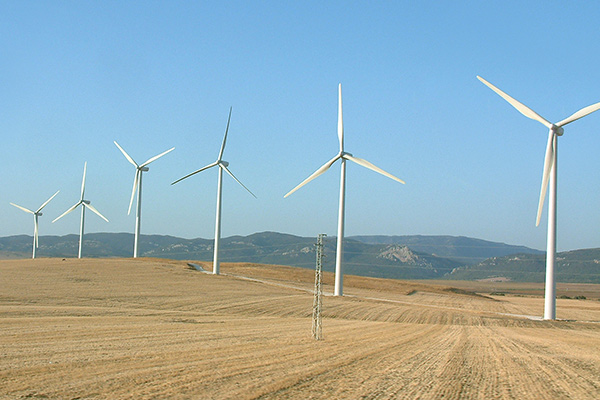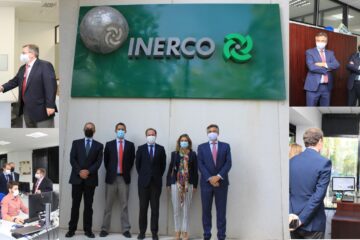An advanced technological response for the EU’s energy future

On 15 May, the public consultation launched by the European Commission on the “Strategy for Smart Sector Integration” as part of the actions of the European Green Pact ended. The forecast is to present in the coming months an action plan to encourage an interrelation between the energy, industrial and transport sectors to increase the penetration of renewable energy and decarbonize the economy more quickly and efficiently.
The processing and use of energy accounts for 75% of greenhouse gas (GHG) emissions in the EU. There has been significant progress in the decarbonization of electricity, but not in other forms of final energy (gas, liquid fuels, heat) which continue to rely mostly on fossil fuels used in transport, households and industry.
The Commission’s strategy aims to implement measures to exploit synergies between sectors through the use of electrification, hydrogen, renewable bio- and non-biological fuels and energy efficiency. Taken individually, the above lines do not represent any significant innovation, as there are specific actions and programs to promote and develop them.
The novelty lies in the integration of the different tools, in a sequence in which the massive production of renewable electricity, in addition to making direct electrification possible, opens the door to the generation, also on a large scale, of hydrogen. And this – as well as for direct use in industry and transport – will be used to produce gaseous and liquid renewable fuels of non-biological origin. The scheme includes that part of the heat needs of one industry will be met by waste heat from another, processed by heat pumps powered by renewable electricity.
Well, the Climate Change Act approved on 19 May by the Council of Ministers and sent to Parliament includes a figure that has been suitably designed and strengthened to provide an extraordinarily solvent response to the strategy of integrating European Union sectors.
Such a figure is that of demand aggregators, which “combine multiple loads from consumers, producers or storage facilities for sale or purchase on the organized market or services to the system”. Aggregators would be included among the activities aimed at the supply of electricity.
In our view, if the demand aggregator’s field of activity is given greater scope and ambition, as we shall describe, it can play a role as an energy integrator in line with the Commission’s strategy.
A demand aggregator should be able to manage loads – in a broad sense – such as renewable electricity from the grid, electricity from photovoltaic, wind and hydroelectric installations linked to the center, electricity and heat from biomass combustion, but also direct solar thermal energy, low-thermal waste heat and even CO2 captured from own processes (biomass) or received from third parties for capture.
A range of technologies are used to process these loads to deliver electricity, hydrogen, steam, heat, cooling and e-fuels, all synthetic renewable fuels, to the market. With this concept, demand aggregators would play an essential role as integrators in large ‘hubs’ or industrial nodes.
In fact, electricity, heat or CO2 produced by industrial activities are stored and/or transformed centrally according to Power-to-X schemes into renewable energy vectors that are essential for other industrial installations in many sectors: refining, petrochemicals, chemicals, paper, cement, pharmaceuticals.
An industrial installation of this type (which we could well call an energy management center) can have electric storage technologies in Li-ion and/or Redox batteries, thermal storage, thermochemical storage, electrolysis for the production of hydrogen, heat pumps and hypothetically CO2 conversion units. Most of these technologies are modular, so the initial design can be modified with great flexibility to expand and adapt to market conditions.
The installation plays a central role, not only as an integrator, as mentioned, but also as a buffer of the interdependencies that are generated between processes that require inputs to operate, resulting from the operation of other processes that may eventually be owned by different owners.
Two key elements support the buffer role: storage technologies and an essential energy management system. Storage technologies – including hydrogen production – provide different performance in terms of storage capacity and duration. The intelligent management system accepts loads based on supply and prices and puts transformation and storage units into service using the panel of technologies, depending on current and future demand, seeking the minimum OPEX and maximizing results.
An installation of this nature (with a configuration adapted to each case) can be linked to a combined cycle for hybridization, represents a new scenario for cogenerations and brings value to the photovoltaic, wind and hydraulic sectors, both in new installations and in retrofitting and repowering. And it can be a key tool in the reconversion of coal-fired power stations by adding value to some of the existing assets.
Therefore, we are of the opinion that a demand aggregator with an extended scope as we have described has a transcendental role to play in the Commission’s Strategy for the Integration of Sectors and at the same time contribute to the final objective of the draft Climate Change Law for Spain to achieve emissions neutrality by 2050 at the latest.
Article published in the 88th issue of ‘Energía’ magazine of ‘El Economista’ newspaper (June 2020)






